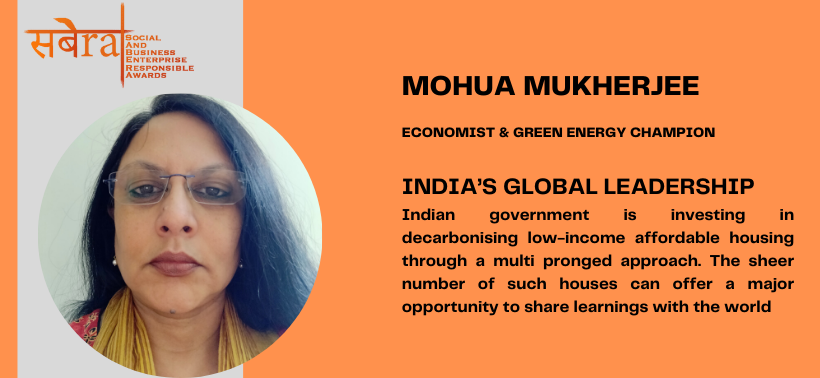The world is rapidly urbanizing and there is an urgent need for the advancement of low-income housing solutions in hot climate developing countries. At present, the state of the art in “sustainable building design” has emerged in OECD countries with temperate climates. Under business as usual (BAU) there is a high probability of adopting, by default, the same international certifications that prevail in rich countries, to fill the vacuum in terms of measurable standards needed for externally funded sustainable housing projects in African countries and other tropical zones.
With better coordination and focused intent, India has an opportunity, for at least three reasons, to play a global leadership role here.
Sheer Number
First, as in many other things, the sheer size of low-income housing numbers in India is bigger. It is estimated that the urban population will be approaching 600 million by the end of this decade, and the shortfall in urban housing units will stand at 19 million by 2030. There is no other country where new affordable housing will be constructed on that scale. Estimates indicate that 95% of the urban housing shortfall will be for low-income housing in particular (presumably as first-time arrivals to the urban area, without any pre-existing shelter).
Pradhan Mantri Awas Yojana (PMAY)
Second, in 2015 India announced a nationwide, government-subsidized housing scheme for low and lower-middle-income groups. This is Pradhan Mantri Awas Yojana (PMAY). Around 12 million urban affordable housing units are scheduled to be built under this program in just the next five years, by mid-decade. Eligible participants in the scheme will receive a credit-linked subsidy, i.e the loan size and monthly interest rate of their mortgage will be somewhat reduced with government financial support.
Decarbonizing low-income housing
Third, the government has realized the environmental impact of adding around 360 million square meters of not-yet-built housing to the nation’s housing stock, which will last for the next 40-60 years. Given this huge investment, the government is focusing on the importance of decarbonizing the low-income housing sector. This means not locking into high-emission building construction materials, and also not ending up with a large stock of energy- inefficient homes that will cost the occupants a lot of money in energy bills, to achieve “thermal comfort”, particularly during a time of climate change and rapidly rising temperatures. In keeping with the government’s own climate goals of reducing greenhouse gases and improving energy efficiency, it is important for its newly sponsored housing stock to be sustainable and consistent with green principles while remaining affordable for the target buyers.
Work in Progress
India has developed several important pieces of intellectual contribution already. There is the India Cooling Action Plan, which was among the first of its kind, which looks at how to minimize the carbon footprint of the country’s accelerating cooling needs and the aspirations of millions of urban middle-income consumers to acquire air conditioners, refrigeration, etc. There is also the Energy Conservation Building Code (ECBC) which was developed for the construction of new commercial buildings in keeping with maximizing their energy efficiency and minimizing energy usage.
Most recently, the Ministry of Power has issued a new energy standard for greening residential buildings, called Eco Niwas Samhita (ENS). ENS requires a wide range of stakeholders to be trained and brought on board with sustainable housing, starting from architects, builders, property developers, bankers and mortgage lenders, urban local bodies, and municipal governments who issue building permits and monitor compliance. ENS principles involve the use of locally available and appropriate construction materials, including the use of recycled materials.
The chief idea of green buildings, in general, is to provide indoor thermal comfort at the lowest energy cost (making use of natural ventilation, shading on windows, verandas, indoor airflow, rooftop solar panels, etc); efficiency of indoor water use, as well as rainwater harvesting; recycling of waste; and strategic use of outdoor green space to reduce the need for mechanical cooling.
Given the scale at which the Indian government is investing in low-income affordable housing under the PMAY scheme, there is a major opportunity for India to share its learnings with the world, and to carve out a space for thought leadership in tropical low-income housing delivery. This opportunity should not be missed!
Views are personal. The author is a former World Bank professional. Passionate green energy professional with experience in 4 continents, Mohua Mukherjee, served as an esteemed speaker through the SABERA 2020 summit.
SABERA helps amplify Responsible Leadership and voices committed to GOOD.
Follow us on Linked, Twitter, YouTube to never miss an update from SABERA. To submit your responsible work for SABERA 2021, Register here.


